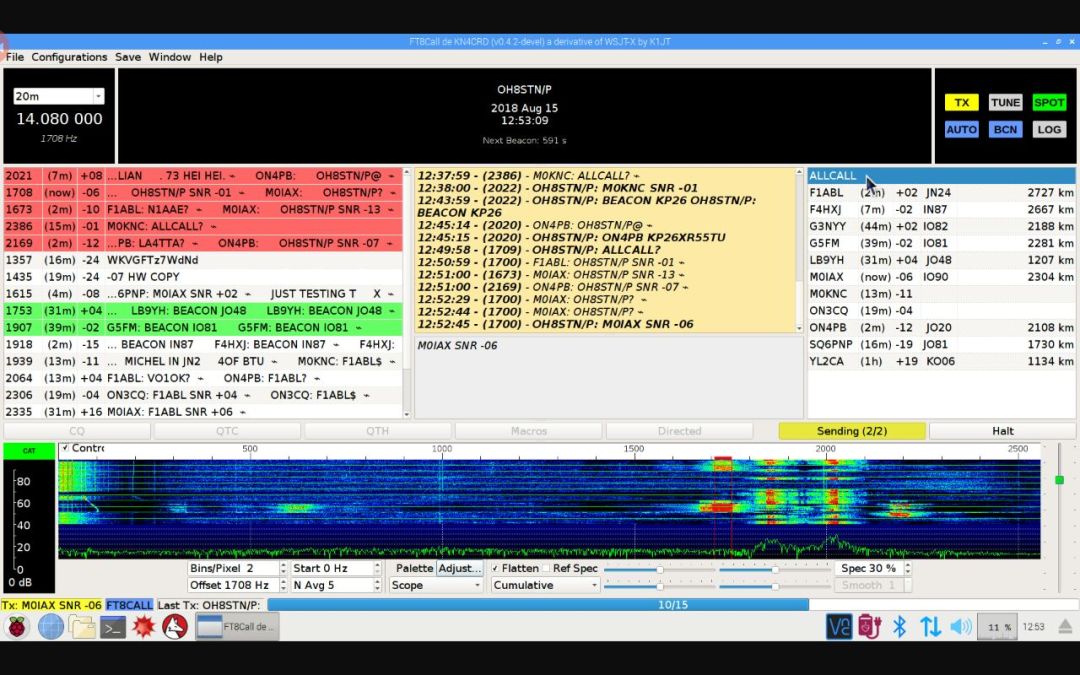JS8Call version 2.2.0 has been released
Jordan, KN4CRD announced that he has just released JS8Call 2.2.0 in preparation for ARRL Field Day this weekend. Go grab it here: http://files.js8call.com/latest.html
About JS8Call
JS8Call is an experiment to test the feasibility of a digital mode with the robustness of FT8, combined with a messaging and network protocol layer for weak signal communication on HF, using keyboard-to-keyboard style interface. JS8Call is heavily inspired by WSJT-X, Fldigi, and FSQCall and would not exist without the hard work and dedication of the many developers in the amateur radio community.
JS8Call is a derivative of the WSJT-X application, restructured and redesigned for keyboard-to-keyboard message passing. It is not supported by nor endorsed by the WSJT-X development group. While the WSJT-X group maintains copyright over the original work and code, JS8Call is a derivative work licensed under and in accordance with the terms of the GPLv3 license. Source code can be found in this public repository: https://bitbucket.org/widefido/wsjtx/
What’s new? Below are a few highlights. You can also read through the extensive changelog here: http://files.js8call.com/changelog.txt
- A new decoder that is more sensitive, more accurate, and more stable. Most frames that were dropped after minor QSB in 2.1 will be correctly decoded in 2.2. Most frames will be able to be decoded up to 2-4dB lower than the 2.1 decoder. I’ve been running this decoder 24/7 for about a month without any crashes. Overall…a big win in my opinion!
- An option to enable automatic time synchronization with stations in the passband. The decoder will try to decode once every second and automatically drift your time to match any decodes. The intent here is to run this to synchronize your time and then disable it (it’s CPU intensive).
- An option to require confirmation for any automatic replies sent from your station. This is helpful for if/when rules of our licenses change related to automatic stations.
- Some new built-in group callsigns for sending messages/commands to groups efficiently: @CQ, @HB, @QSO, @QSOPARTY, @CONTEST, @FIELDDAY, @SOTA, @IOTA, @POTA, @QRP, @QRO. (The full list of built-in groups is in the JS8Call Guide)
- A new JS8Call API that is easier to use and which includes more real-time information coming out of the app. This should be useful for folks integrating with JS8Call for mapping, grid tracking, and other types of software extensions.
- A new display format for heartbeats. They will now be sent to an @HB group with the HEARTBEAT command, ala KN4CRD: @HB HEARTBEAT EM73. Don’t worry, it’s backwards compatible with older versions of JS8Call.
- Related, responses to heartbeats will be sent using a new SNR command instead of the old ACK command. The new response will look like: HEARTBEAT SNR -5
- You can now easily disable the transmitter (just like the receiver) using the menu or by clicking the TX button.
- The dropped frame indicator is now configurable (… by default)
- The waterfall can now visually display when the decoder attempts to decode a signal. Useful for seeing where all of your CPU is going.
- And many many many bugfixes and usability improvements.
- Note: If you caught my YouTube presentation, you might have seen the “Ultra” mode mentioned. That unfortunately did _not_ make the cut for the 2.2 decoder improvements. You may see that in the near future after some more testing.
You can read the JS8Call documentation here and you can download JS8Call from http://files.js8call.com/latest.html.


February 2, 2021 @ 3:03 am
My rig isn’t in the list. Can the CAT commands for FTDX1200 Yaesu radio be added? Who can I ask?
January 28, 2023 @ 6:54 pm
Did we ever get the settings for the Yaesu FTdx 1200?